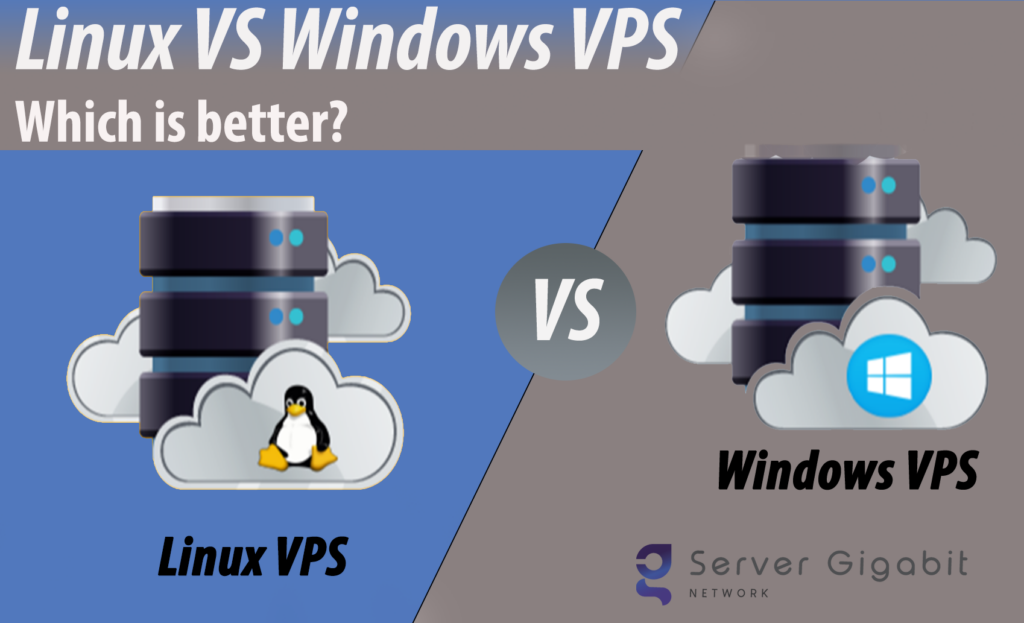Newbies who want to upgrade to VPS are often required to choose between two operating systems that currently dominate the market.
What is the difference between a Windows VPS and a Linux VPS? Take a look at the details below.
Cost
Since Linux is an open-source platform, it is significantly less expensive than Windows VPS. In addition, most Linux software and applications are available for free. However, this does not consider the possibility of finding a low-cost Windows VPS on the market.
It is accurate that Windows VPS, which is owned by Microsoft, requires users to pay a license fee. However, for a few extra dollars per month, you can get access to well-established, effective core applications as well as expert support.
Performance
Secure Shell (SSH) is used to manage Linux VPS via command lines, and it is used to secure the VPS. It is more resource-effective due to its simple command structure since it does not require the administrator to execute reboots even while the system is under high loads.
Every driver or software update on a Windows VPS requires a reboot, either immediately or later based on its internal schedule. In addition, Windows VPS has a Graphical User Interface (GUI) and a variety of pre-installed Microsoft applications that use a lot of VPU resources.
Compatibility
Linux VPS runs well with virtually all types of open-source software, such as PHP, Perl, and MySQL, while Windows VPS are developed to function with Windows-specific applications written in Windows-only languages like.NET or ASP.
Certain applications, such as Microsoft Sharepoint and Microsoft Exchange, are only available for Windows users.
User friendly
It depends on the level of knowledge about server technologies. Since Windows uses a graphical user interface, non-IT professionals can find it easier using it (GUI).
The disadvantage is that it requires a lot of effort, resources, and time to complete a task. The Linux VPS, on the other hand, is based on the command line. It is a relatively straightforward display of information required without distraction.
New Linux users will be glad to know that a graphical user interface (GUI) is now available for them to use.
Security
DDoS attacks, malware, and data breaches are three of the most common threats. Users of Linux VPS have the flexibility to develop their security strategy against cyberattacks.
On the other hand, Windows VPS sort of takes cares of this by providing regular updates to protect against security-related errors. This may also mean that there is no need to employ more staff to take care of cyberattacks.
Server access
Server access is required for users to have more control over their VPS settings and configuration. File Transfer Protocol (FTP) is used by Linux VPS for uploading and downloading files that are widely used in website development.
Secure Shell (SSH), a cryptographic network protocol for operating network services securely on an unsecured network, is another server access alternative accessible only to Linux VPS users. Users of Windows VPSs can use SSH by installing PuTTY.
Support
When technical issues arise which are wholly unavoidable in the world of technology, you will want a professional and experienced support team to assist you instantly.
While there is a huge community of professional coders behind the Linux VPS that can give you advice and examine sources codes to fix backdoors, don’t expect them to be available 24/7 on standby at your service as they are usually not paid to do so.\
On the contrary, Windows VPS has the upper hand as it is backed by a team of professional technicians that are equipped with the right knowledge to help you anytime.
Generally, Linux VPS is more versatile and cheaper, making it popular amongst small businesses, software developers, IT companies, and so on, whereas big businesses prefer Windows VPS due to its solid and reputable services over the years.




